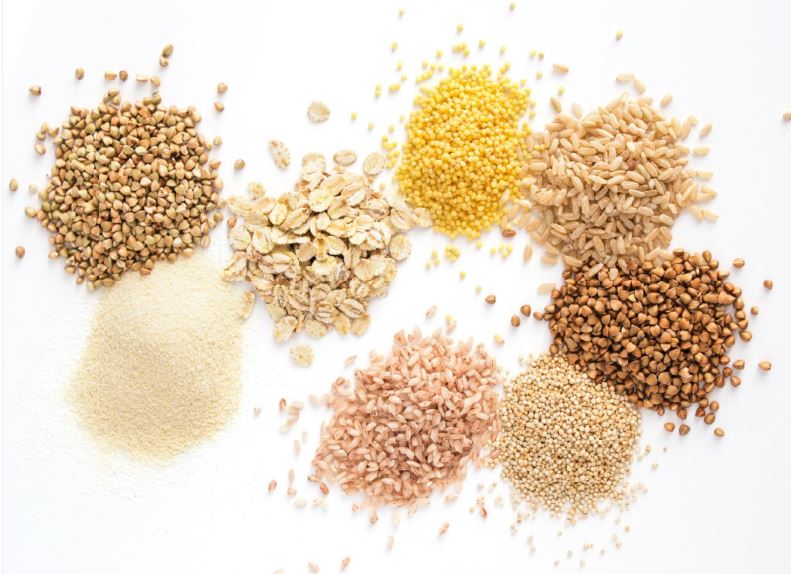Gluten-free cereals
In the following you can find an overview of all gluten-free cereals:
 Rice
Rice
The rice plant (Oryza sativa) as one of the most important (gluten free) sorts of cereals forms the nutritional basis in many parts of the world. The main production area for rice is in Asia. Here, more than 95% of global yields are harvested. The main growing regions for rice in Europe are northern Italy, southern France, Spain and Portugal. 80% of the world rice harvest are generated in wet rice cultivation. The sorts of rice are distinguished in long grain rice (Indica) and short-grain rice (Japonica). For the grinding from rice to rice semolina, short grain rice is the sort which is almost exclusively used. Long grain rice is often further processed to parboiled rice.
 Maize
Maize
Maize (Zea mays) belongs to the family of sweet grasses and has its origins in Mexico. It is the most cultivated agricultural plant. Besides the main usage as a forage plant, maize is used as food and energy plant. During the sowing of maize it is important to ensure a soil temperature in the depth of planting (approx. 5 cm depending on soil quality) of at least 9 ° C. In contrast to that, a late sowing leads to lower yields. In the German speaking areas it is necessary to dry the maize after the harvest. Immediately after the harvest, the maize grain moisture can account up to 35%. For the usage of this product as food, a careful drying down to <14% moisture is needed.
 Millet
Millet
The proso millet (Panicum miliaceum) as comparably old cereal plant makes few demands on the ground. Due to it's good tolerance of draught and efficient use of water, millet can be grown on dry, sandy soils. However, it’s temperature requirements are high and it is highly sensitive to frost. Millet is an extensive culture that needs few nutrients and is relatively immune against diseases or parasites. As the ripening of the grains in the panicles does not happen simultaneously, the harvest happens prior to the full ripeness. The harvest is brought forward in order to avoid crop losses arising from defaults. Because of the unequal ripening, the drying of the millet is necessary. Due to the fact that millet is gluten-free, it becomes more and more important for the diet of celiac patients rises constantly.
 Buckwheat
Buckwheat
The ‘real’ buckwheat (fagopyrum esculentum) originates in the family of the knotgrasses. Buckwheat makes few demands on the soil in the cultivation. However, this plant is very sensitive against cold and does not resist any frost. Due to this sensitivity to cold, the yield is much more uncertain. The importance of buckwheat products in the gluten-free diet (celiac disease) is constantly increasing. This is also the reason why special attention has to be payed already in the cultivation and storage phases of buckwheat to exclude any unintentional mixing with cereals containing gluten.
 Amaranth
Amaranth
Amaranth (Amaranthus caudatus) belongs to the family of Amaranthaceae. It has few claims on the soil as well as relatively little water is sufficient. Amaranth is one of the oldest natural plants. Already thousands of years ago, the harvested grains served as a staple food in South America. Due to the absence of gluten, Amaranth provides a fully adequate and well tolerated substitute for people with gluten intolerance (celiac disease).
 Quinoa
Quinoa
Like Amaranth, Quinoa (Chenopodium quinoa) belongs to the the Amaranthaceae plants. Originating from South America as amaranth does, Quinoa forms one of the staple foods. It is particularly grown in the highlands of the Andes (4000 m). As maize as alternative plant can’t be grown any more at these altitudes, quinoa is considered as essential in this region. Today, the cultivation in Bolivia and Peru is fostered by development projects. The demands on the ground and the water supply of this plant are low. As several other cereals, quinoa is also gluten-free whereas it is used as a fully adequate substitute in the case of celiac disease.

Gluten-free products
We offer you a broad selection of gluten-free products - for every taste and carefree enjoyment.

Best raw materials
Trust in origin and quality of the raw materials are more important than ever for our customers. Therefore, we exclusively cooperate with suppliers who fulfill these high quality standards.